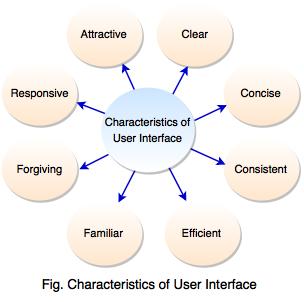
Swooping in the mobile app maintenance arena is easy. An idea pops up in your mind, you work out a solid plan with the team, cook it up, and BOOM! You take the grid by storm!
The next day, you plan for a savvy trip to the mountains. And why not? You deserve it. But mind it, sleeping on the same app structure may collapse your entire hard work in a single day!
One glitch and you will fall down the charts like a dead bird.
To keep the buzz alive, you must design a robust and innovative app maintenance plan. The team should be on alert to detect a downtime before it occurs. Another reason to stay vigilant is to avoid cyber threats. Any loophole in the app can allow corrupt entities to sneak in and steal confidential info.
Besides, app maintenance also ensures your app follows the trends that fit the bill. It helps to grip the user’s attention and generate traffic.

It is, thereupon, vital to incorporate upgrade charges in your contract with the developing team. The industry norm for software maintenance is around 15 to 20 percent of the original development costs. So, if your app costs $100,000 to build, roundly estimate to pay about $20,000 each year for app maintenance.
Sounds expensive? Well, that’s the downside of being in here. Regardless of the whistles and bells you include in the app; there will be a flood of users’ feedback as soon as it launches.
Being a smart developer, let the user dictate the app. Here are five tips to ensure its long-term success:
- Plan for Updates
App updates are one of the biggest app marketing tools that developers have at their disposal. Regular updates can allow an app to receive more mindshare as compared to other apps on the phone. It keeps your app at the top of mind because it appears in the “updates” list of Google and Apple Store.
Regular maintenance of the app also shows the users that the developer is heavily investing in this app. It can help build a loyal following.

Moreover, progressively delivering features is more cost-effective as compared to providing them all together at once. This practice falls in line with agile development methodologies. It involves delivering first elements with high business value.
- Ensure Support via New Hardware/Software
Developments in IT emerge and fizzle with the blink of an eye. A new iPhone or a Samsung model comes out now and then. Each device tags along with new specifications, where obsolete apps may not work as intended.
If you don’t maintain your app’s validity for the latest devices and operating systems, you will start losing your customers. On the contrary, a smart move would be to integrate the newest hardware features to enhance your app functionality. For instance, enable support for fingerprint login and sending push notifications.
- Update the User Interface

As your app matures, your users will also mature. The UI might need refreshing to reflect the changes.
Adding or eliminating features from an app is more important than a bug fixture. For instance, when Facebook released version 3.5 of its iPhone app, it introduced new privacy updates. This was meant to refine the user interface and added the ability to share external links from inside the app.
Sometimes, you might need to add/remove features to retain the stability and performance of the application. The focal point that leads this decision is how it will impact the users. If a feature is causing undue strain or stays unused, better drop it.
A popular iOS app, Instapaper by Marco Arment, is an excellent model of this practice. Arment does not hesitate to remove features that are no longer used or cause problems. The point being, you must match your UI with evolving styles and trends to rock the grid.
- Fix Bugs Regularly
It’s surprising how quickly a team can find themselves in a downward spiral if they ignore bug fixtures. This is the reason why app tycoons emphasize so much on testing the applications. Without the review or testing process, you will invariably run into cases with bugs still looming around. In some cases, the “fix” may not work at all.
Keep in mind that every time you write new code, it is introducing the opportunity for additional bugs to crawl in. If your team isn’t retesting, then they’re only doing the job halfway.

Eventually, the bugs accumulate, causing the app to crash overnight. This may multiply your expenses if left as it is.
Another way to detect bugs is through customer feedback. Not having to deal with bugs will make customers happier with your software. In addition to happiness, your customers will see your software as more reliable. They will be more comfortable trusting it, and thus, recommending it.
Analyzing the security algorithm incorporated in the AirG spam-free apps is a good place to start.
- Keep a Check on Licenses
Typically, most apps use licensed technologies for development. Some you can buy for a lifetime while others require yearly renewal. When you set up the app maintenance budget, make sure that you consider these costs. It is the procedure followed by the renowned social, business, and gaming applications.
The good part about this is that it’s predictable. If you have done due diligence in the app development stage, likely, a crazy high bill won’t hit you!
Final Thoughts
The mobile app arena is quite a tight feedback loop with end-users that you can highly benefit from. All you need to do is plan ahead and think about the maintenance from the beginning.
It is a tactic that signals your commitment towards the users. Plus, the digital marketplace rewards frequently updated apps. The perks they receive include high ranks, more downloads, low cost per download, and increasing revenue.
We hope this blog helped you to gain a clear sight of the process. We wish you all the best and hope to see you floating the charts like a champion!

